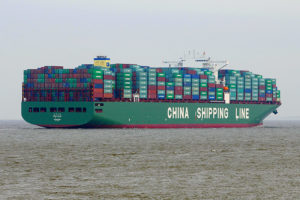The Administration’s crackdown on imports from China, intended to address a $420-billion trade deficit, may produce some unintended consequences. It was just revealed, for example, that the higher tariffs on Chinese goods might end the availability of free Bibles (nearly 100 percent of which are now printed in China) for prisons, schools, military bases, hospitals, and hotels. Organizations like the Gideon’s are working with the Administration to amend the list of over 500 products affected by the new tariffs.
At least one consequence, though, is very much intended. In fact, it is among the primary reasons the Administration decided something had to be done. Namely, the dangerous dependence on China for minerals that are critical to America’s economy and security.
Last year the President ordered a list of “critical minerals,” defined as non-fuel minerals “essential to the economic and national security of the United States, the supply chain of which is vulnerable to disruption,” and that are used in manufacturing products upon which our economy and security depend. The Executive Order called for a new strategy to reduce American reliance on imports of critical minerals, and to increase domestic production.
 Much has been written about our dependence on Chinese imports of “rare earth” minerals, and the “critical minerals” list includes those and other important elements used to manufacture everything electronic.
Much has been written about our dependence on Chinese imports of “rare earth” minerals, and the “critical minerals” list includes those and other important elements used to manufacture everything electronic.
Our modern world is unimaginable without smart phones, computers, laptops, radios, televisions, and other devices that make instant communication possible, as well as access to almost unlimited information from across the world. That technology is now essential, for virtually all business transactions, energy generation and transmission (including wind turbines and solar panels), transportation, military communication, entertainment, education, connections with family and friends, and just about everything else we do – even writing a column like this and getting it to the editor on time.
Cell phones are so routine that we rarely ponder where they come from or what they are made of. They just look like glass and plastic, but they are much more. The batteries are made of lithium, niobium, manganese, and tantalum. The screens and LCD displays contain aluminum. Besides silicon, microprocessors and circuit boards contain important components made from antimony, arsenic, and indium, soldered together with tin. Micro-capacitors are made of tantalum and platinum, the vibration motors have tungsten and neodymium weights, and the speaker magnets are made of arsenic and gallium. The outer casing on most phones is a carbon composite that includes magnesium. All those minerals have one thing in common – they are primarily produced in China.
Predictably, with the trade dispute heightening this week, China hinted that it might limit exports to the U.S. of such critical minerals. The world’s biggest producer, China supplies about eighty percent of U.S. imports of these critical minerals. In addition, the vast majority of such minerals are already embedded in the computers and phones we buy – almost all of which are made in China, or use components that are. American imports from China include $77 billion worth of computers and $70 billion worth of cell phones every year. It is hard to imagine anything that could disrupt America’s economy more than a Chinese decision to halt that flow.
To guard against such a calamity, the Commerce and Interior Departments just announced a new “Federal Strategy to Ensure a Reliable Supply of Critical Minerals,” a series of new policies to jump start domestic mining and production. The procedures involve faster permitting, more complete information on the location of such minerals on public lands, and a new analysis of the nationwide potential.
The Interior announcement makes clear that “The U.S. is blessed with an abundance of mineral resources,” including all of these critical minerals. To help producers locate them, the strategy includes a new U.S Geological Survey program of surface and subsurface mapping, and a similar Bureau of Ocean Energy and Minerals survey of offshore sources.
The Chinese negotiators used an old expression that translates to “Don’t say we didn’t warn you.” In fact, we should all have seen this coming for years. America’s bureaucratic regulatory quagmire makes permitting any mining project economic unfeasible. The environmental industry, and higher labor costs, have nearly shut down mining in this country, while we grow ever more dependent on products made from mined minerals.
With the new Interior strategies in place, maybe we don’t need a trade war with China, at least not over critical minerals. Imagine instead, for the products our economy and security depend on, that we simply didn’t need China anymore.
This column originally appeared in the Grand Junction Daily Sentinel June 7, 2019.




Comments on this entry are closed.